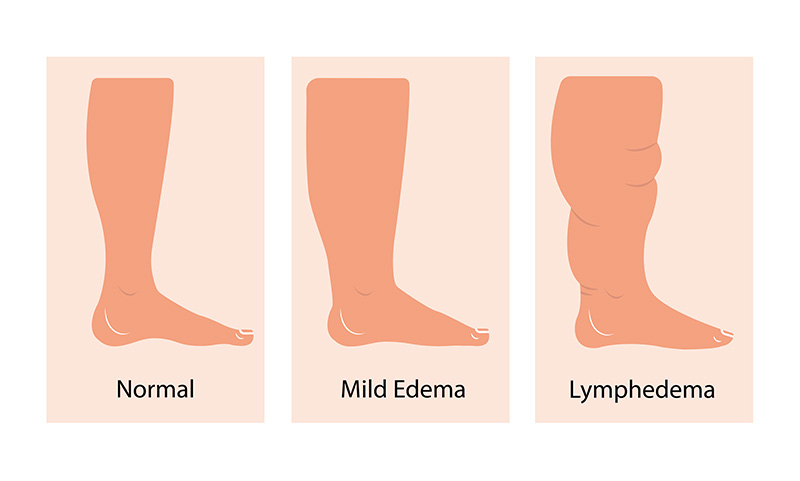Lymphedema is a chronic condition that affects the lymphatic system, causing fluid to build up and leading to swelling in various parts of the body, most commonly the legs. Understanding the stages of lymphedema in legs is crucial for early diagnosis, effective treatment, and preventing complications.
What is Lymphedema?
The lymphatic system is a network of vessels and nodes responsible for draining excess fluid, called lymph, from tissues and transporting it back into the bloodstream. Lymphedema occurs when this system is damaged or blocked, causing lymph to accumulate, and leading to swelling.
What Causes Lymphedema in the Legs?
Several factors can contribute to lymphedema in legs, including:
- Surgery: Lymph node removal during cancer treatment, particularly breast cancer, is a common cause.
- Radiation therapy: Damage to lymph nodes can occur as a side effect of radiation therapy.
- Chronic venous insufficiency: Poor blood circulation in the legs can increase the risk of lymphedema.
- Infection: Certain infections can inflame and block lymph vessels.
- Parasitic diseases: Lymphatic filariasis, caused by parasitic worms, is a major cause of lymphedema in some parts of the world.
- Congenital malformations: Some people are born with lymphatic system abnormalities that predispose them to developing lymphedema.
Lymphedema Symptoms
Symptoms of lymphedema in legs can vary depending on the stage and severity. They may include:
- Swelling: This is the most common symptom, typically starting in the toes or ankles and gradually progressing upwards.
- Tightness or heaviness: The affected leg may feel heavy or uncomfortable.
- Skin changes: The skin may become thickened, hardened, or pitted.
- Reduced mobility: Lymphedema can restrict joint movement and make walking difficult.
- Pain: Lymphedema can cause pain or discomfort (less common).
The 4 Stages of Lymphedema
Lymphedema is typically classified into four stages, each with its own characteristics:
Stage 0 (Latent Stage):
- No visible swelling.
- The lymphatic system is already compromised but can still manage the lymph flow.
- Early detection through specialized tests like lymphoscintigraphy is crucial.
Stage 1 (Mild Lymphedema):
- Mild swelling that may indent with pressure (pitting edema).
- Swelling often improves with elevation.
- Early intervention with lymphedema treatment is essential to prevent progression.
Stage 2 (Moderate Lymphedema):
- More pronounced swelling that persists even with elevation.
- Pitting edema may be absent due to tissue fibrosis.
- Skin changes like thickening and hardening may occur.
- Consistent lymphedema treatment and compression therapy are necessary.
Stage 3 (Severe Lymphedema/Elephantiasis):
- Extreme swelling with significant skin changes, including thickening, hardening, and wart-like growths.
- Reduced mobility and increased risk of infections.
- Intensive lymphedema treatment and specialized care are required.
Lymphedema Treatment
Early diagnosis and treatment are vital for managing lymphedema and preventing complications. Treatment options may include:
- Complete decongestive therapy (CDT): This combination of manual lymphatic drainage, compression garments, exercise, and skin care are the mainstay of lymphedema treatment.
- Compression garments: Wearing specially designed garments helps control swelling and prevent further fluid accumulation.
- Skin care: Proper hygiene and moisturization are crucial to prevent infections and skin breakdown.
- Surgery: In severe cases, surgery may be considered to remove excess tissue or create new lymphatic channels.
Living with Lymphedema
Living with lymphedema can be challenging, but with proper management and support, individuals can lead active and fulfilling lives. Remember:
- Early diagnosis and intervention are key.
- Consistent treatment with CDT and compression therapy is crucial.
- Skin care and infection prevention are essential.
- Joining a support group can provide valuable information and connection with others facing similar challenges.
By understanding the stages of lymphedema in legs and seeking timely diagnosis and treatment, individuals can effectively manage this condition and live a healthy and fulfilling life. Schedule a free vein screening at a United Vein & Vascular Center near you.

